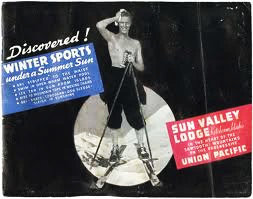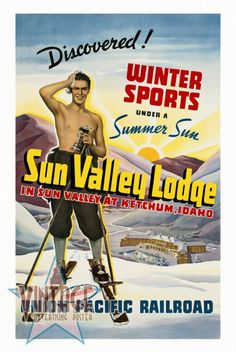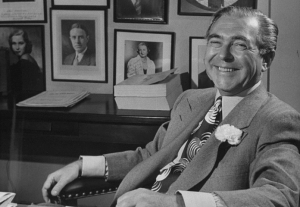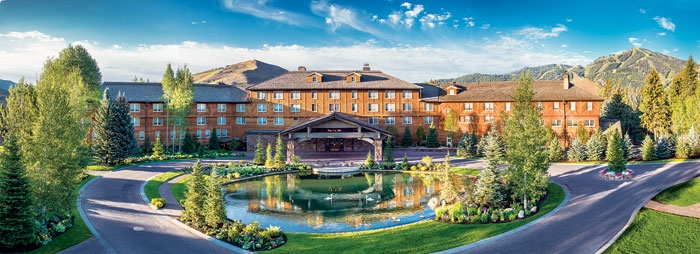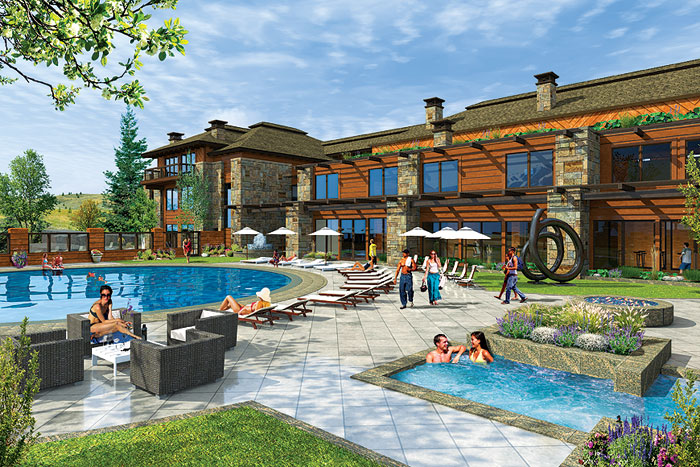The Hollywood and social celebrities that Steve Hannagan enticed to Sun Valley paled in comparison to arranging for Ernest Hemingway’s visit at the resort. In the fall of 1939, Hannagan heard that Hemingway was in Montana on a hunting trip, Hannagan immediately sent, Gene Van Guilder, his resident associate at Sun Valley, to find Hemingway and offer him gratis room and services at the Resort lodge.
Guilder successfully found Hemingway and checked him into Suite 206, a choice corner suite. At the lodge, Hemingway and his family found that they could sign for anything with no expectation of payment. His son, Jack, said that signing for something “was sort of a sinister thing.”[1] Martha Gellhorn, a world-famed journalist in her own right joined Hemingway at Sun Valley while she auditioned for the part of the newest Mrs. Hemingway.
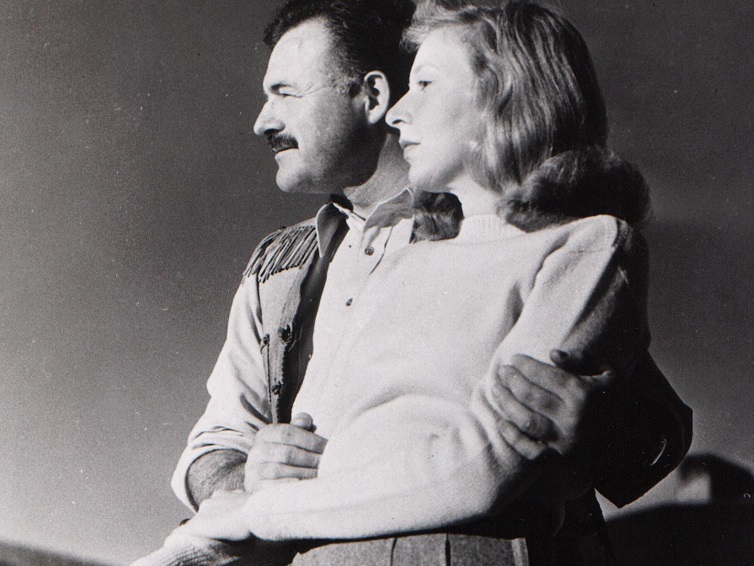
Hemingway and Gellhorn at Sun Valley[2]
Hemingway remained at Sun Valley from early fall of 1939 until December 9th, editing his latest novel, For Whom the Bells Toll, his story of the Spanish Civil War. The next year, Hemingway returned to Sun Valley to meet Gary Cooper, who would play the lead in the movie version of the novel.[3]
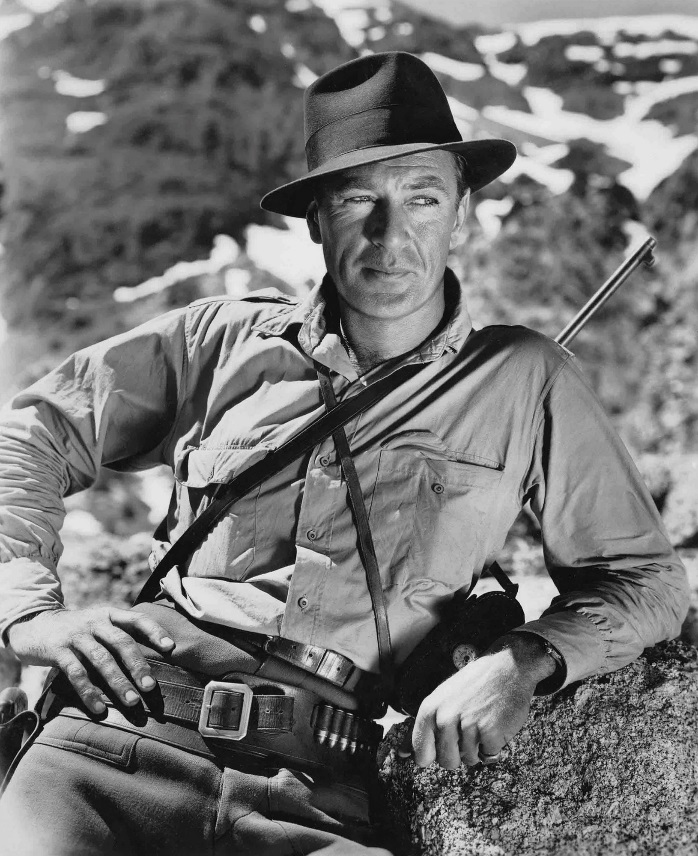
Gary Cooper, For Whom the Bells Toll[4]
Despite his reputation as a heavy drinker, Hemingway avoided alcohol while working on a novel and kept to a strict early morning regimen of writing, editing, and rereading drafts. In the afternoons, he and Gellhorn frequently traveled to Shoshone for upland pheasant and dove hunting and to Silver Creek for duck and goose hunting.[5]

Ernest Hemingway[6]
During Hemingway’s stay at the lodge, his publicity photos began to reach the national press carrying the dateline Sun Valley. The nearby picture of Hemingway working on his novel captures all that can be said of a well-staged publicity shot. Showing him editing a chapter with the mountains as a trope for his iconic features as a writer and a man’s man. Steve Hannagan got something else of inestimable, historic value from Hemingway’s free room and board – a line about Sun Valley in For Whom the Bells Toll.
Hemingway and the Death of Hannagan’s Chief Publicist for Sun Valley
Hemingway’s love of bird hunting involved him in the sad ending of Gene Van Guilder, who accidentally shot himself while hunting ducks. It happened when another hunter in the boat fired his gun and the recoil upset Van Guilder’s balance. Van Guilder’s gun accidentally fired and was fatally wounded.[7] Nothing could have been done because Van Guilder’s wound was too deep, and they were too far from help.
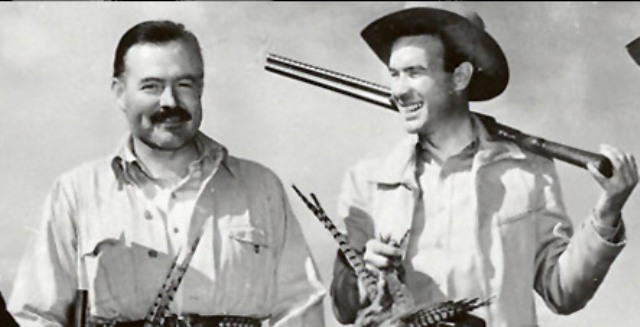
Ernest Hemingway with Gene Van Guilder[8]
Although Hemingway was not on the hunting trip, he accepted the grim duty of telling Hannagan that Van Guilder had died from a hunting accident. Hemingway also wrote the eulogy for Van Guilder’s funeral, which included the poignant phrase; “Best of all he loved the fall.”[9] There is a statue of a young Hemingway at his home in Ketchum that bears his tribute to Van Guilder.
According to Edward Ross’s research on Hannagan, Hemingway and Hannagan regularly corresponded until his death in the early fifties. Hemingway’s letters were “studded with four-letter words and anatomical references that [made Margaret Ray, Hannagan’s Executive Assistant blush].” [10] However, Hemingway’s usually wrote chatty letters about his work. For instance, the following quote is from a letter in 1950 written by Hemingway from his finca outside Havana.
“Dear Steve: Glad to hear from you kid … Have done two sets of galleys and now [we] are waiting for the page proofs [He was completing Across the River and into the Trees.] Have worked on it 18 months and gone over it about 200 times and I swear to Christ that when it is finished I will not go around reading passages from it to my friends at the Stork [Club].
Hemingway penned a side note on the letter to Hannagan saying “This book is very good. Don’t let someone knock you off.” [11] Steve treasured all his letters from Hemingway and was proud to correspond with an author considered at the time to be America’s greatest living novelist. Sadly, nearly all the correspondence between the two disappeared after Hannagan’s death when a custodian mistakenly carried his files to an incinerator rather than to storage.
End Notes
- Oppenheimer, Doug and Jim Poore (1976); Sun Valley; Beatty Books; Boise, Idaho; p. 147. ↑
- Corrigan, Maureen (May 5, 2014); Photograph of Ernest Hemingway and Martha Gellhorn at Sun Valley (Retrieved September 12, 2017); “In ‘Hotel Florida’ Three Couples Chronicle the Spanish Civil War”; WUNC; http://wunc.org/post/hotel-florida-three-couples-chronicle-spanish-civil-war#stream/0. ↑
- The Editors of American Heritage (November 1998; Volume 49, Issue 7; Near Perfect Conditions”; American Heritage Magazine; (Retrieved March 31, 2011);http://www.americanheritage.com/content/near-perfect-conditions. ↑
- Photograph of Gary Cooper, “For Whom the Bells Toll” (Retrieved September 13, 2017); http://www.doctormacro.com/Movie%20Summaries/F/For%20Whom%20the%20Bell%20Tolls.htm. ↑
- Foley, Gregory (Fall 2005); “Best of all he loved the fall;” Sun Valley Guide (retrieved April 23, 2014); sunvalleyguide.com; http://www.svguide.com/svg_hem.htm. ↑
- Photograph of Ernest Hemingway at His Typewriter; (June 11, 2006); (Retrieved September 13, 2017); “Hemingway Business Still Brisk at Sun Valley Lodge”; The Spokesman-Review; http://media.spokesman.com/photos/2006/06/11/HAWKING_HEMINGWAY_06-11-2006_F97PH2G.jpg. ↑
- Arnold, Lloyd (1977); Hemingway High on the Wild; Grosset & Dunlap Publishers; New York; p. 26. ↑
- Bossick, Karen (September 16, 2016); Photograph of Ernest Hemingway with Gene Van Guilder (Retrieved September 13, 2017); “Ernest Hemingway – A Conflicted ‘Rogue Male?’”; Eye on Sun Valley; http://www.eyeonsunvalley.com/Story_Reader/3057/Ernest-Hemingway%E2%80%94A-Conflicted-%27Rogue-Male?%27-/. ↑
- Arnold, Lloyd (1977); Hemingway High on the Wild; Grosset & Dunlap Publishers; New York; p. 29. ↑
- Ross, Edward Ellis;Hannagan Research Document; source: New York University Archives; p. 179. ↑
- Ross, Edward Ellis;Hannagan Research Document; source: New York University Archives; p. 180. ↑
